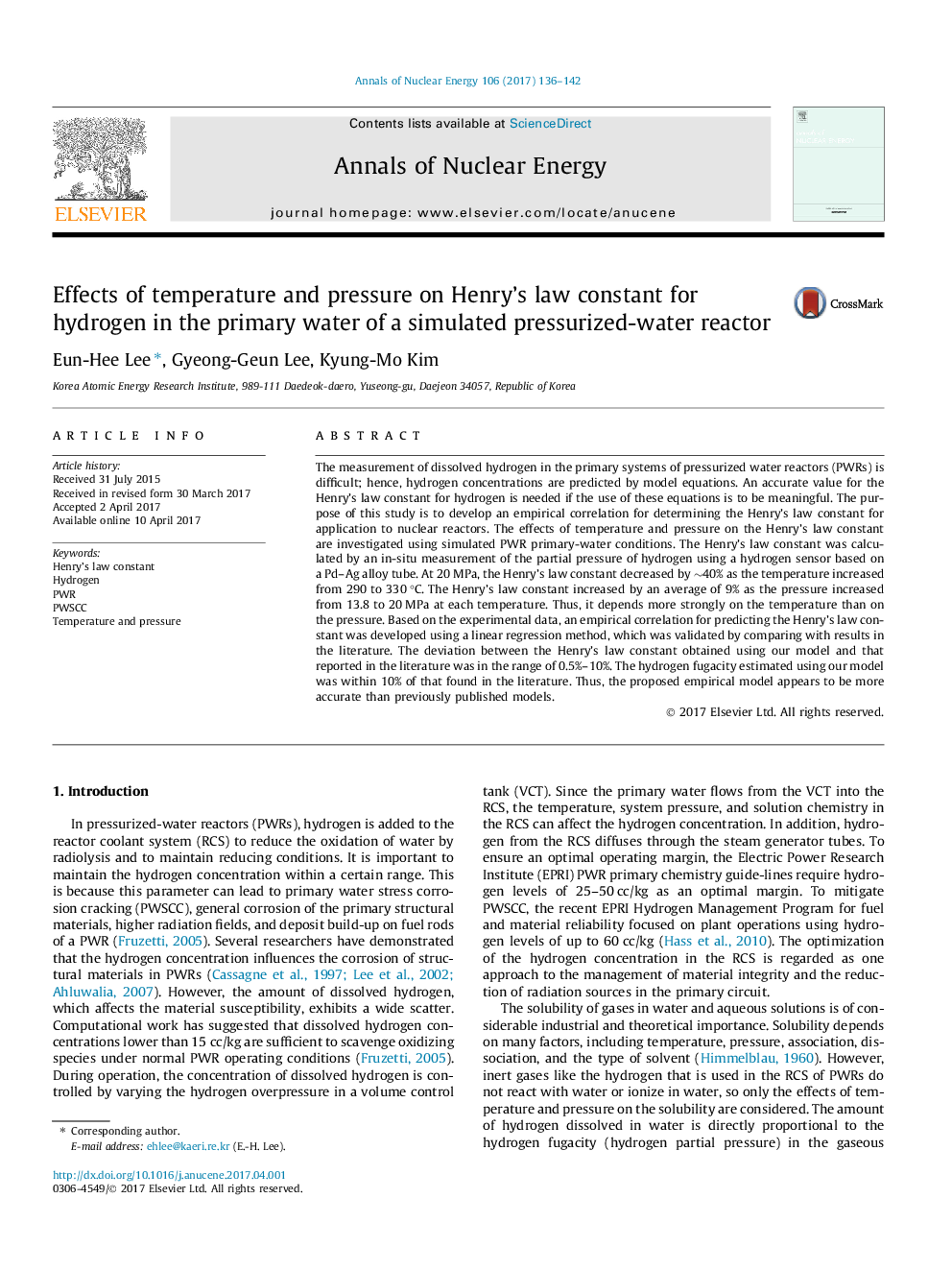| Article ID | Journal | Published Year | Pages | File Type |
|---|---|---|---|---|
| 5475183 | Annals of Nuclear Energy | 2017 | 7 Pages |
Abstract
The measurement of dissolved hydrogen in the primary systems of pressurized water reactors (PWRs) is difficult; hence, hydrogen concentrations are predicted by model equations. An accurate value for the Henry's law constant for hydrogen is needed if the use of these equations is to be meaningful. The purpose of this study is to develop an empirical correlation for determining the Henry's law constant for application to nuclear reactors. The effects of temperature and pressure on the Henry's law constant are investigated using simulated PWR primary-water conditions. The Henry's law constant was calculated by an in-situ measurement of the partial pressure of hydrogen using a hydrogen sensor based on a Pd-Ag alloy tube. At 20 MPa, the Henry's law constant decreased by â¼40% as the temperature increased from 290 to 330 °C. The Henry's law constant increased by an average of 9% as the pressure increased from 13.8 to 20 MPa at each temperature. Thus, it depends more strongly on the temperature than on the pressure. Based on the experimental data, an empirical correlation for predicting the Henry's law constant was developed using a linear regression method, which was validated by comparing with results in the literature. The deviation between the Henry's law constant obtained using our model and that reported in the literature was in the range of 0.5%-10%. The hydrogen fugacity estimated using our model was within 10% of that found in the literature. Thus, the proposed empirical model appears to be more accurate than previously published models.
Related Topics
Physical Sciences and Engineering
Energy
Energy Engineering and Power Technology
Authors
Eun-Hee Lee, Gyeong-Geun Lee, Kyung-Mo Kim,
